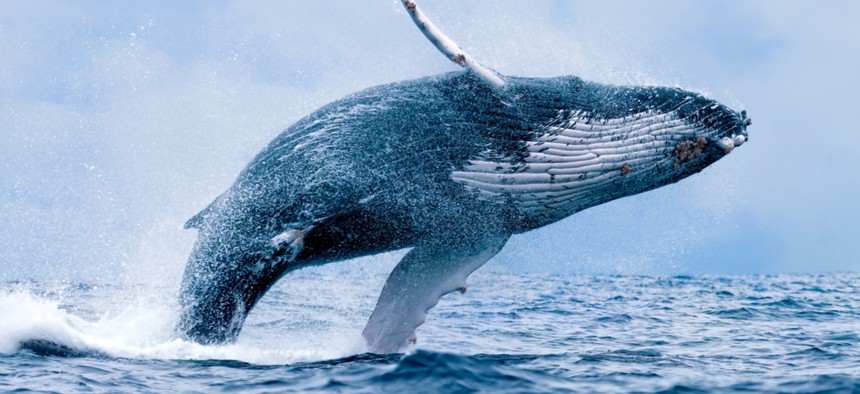Could Whale Migration Be the Key to Smarter Naval Operations?

Paul S. Wolf/Shutterstock.com
DARPA wants to use marine life as “living sensors” in the internet of things network.
The way marine animals migrate or decide to settle in certain environments could be the key to more tactically sophisticated naval operations.
A military research project aims to observe marine life, reframing the organisms living on the water’s surface and below the surface as “living sensors” that could “greatly increase maritime awareness.”
The Defense Advanced Research Project Agency’s Biological Technologies Office is gathering ideas about how observing those creatures could lead to the development of “new sensing capabilities,” according to a solicitation.
» Get the best federal technology news and ideas delivered right to your inbox. Sign up here.
Some groups of organisms emit certain energy that could be used in imaging, and avian and marine life use olfaction and the release of chemoreceptors to identify their surroundings. Changes in the “natural underwater soundscape” could also be indicators of human activity nearby.
Other than those examples, it’s not clear exactly what animalian signals DARPA wants to observe—but marine life has a “wide variety of strategies” helping it “successfully compete” in natural habitats, and learning about how it gathers information about its surrounding could also expand the Navy’s ability to monitor the ocean.
The research and development unit is looking for input from marine biologists, roboticists, engineers, biochemists, ocean engineers and anyone who can combine sensor development with marine ecology.
It’s also looking for algorithms that could make biological sensor data into “actionable information while minimizing uncertainty.”
Responses are due Sep. 20 by 4 p.m. Eastern time.





